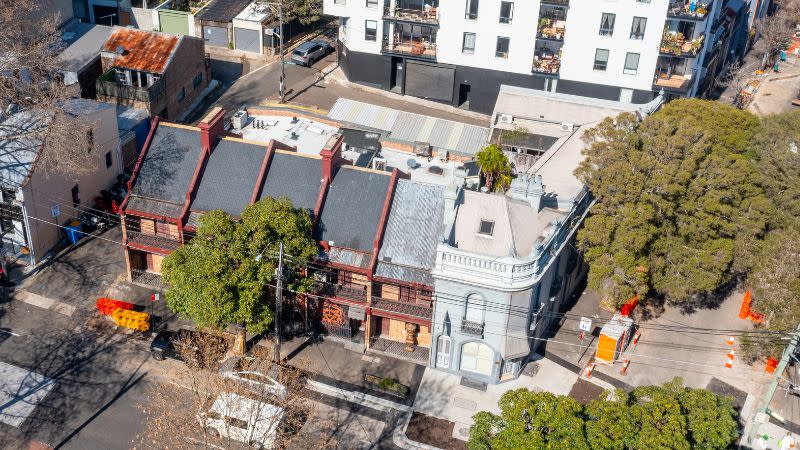
Inner-city terraces could again play a role in providing thousands of homes but their future is uncertain with governing bodies holding opposing ideas for the housing stock.
Terraces were built during the population boom and subsequent housing drive in Melbourne and Sydney between the 1850s and 1890s.
The distinctive row houses with shared walls were cheaper and faster to build. Many still stand today and are among the most expensive properties in the nation thanks to their location and the popularity of the architectural style.
The City of Sydney is offering several of these properties at Beaconsfield and Darlinghurst through an expressions-of-interest campaign due to end on October 30.
On offer are seven semi-detached, heritage-listed terraces on a 700sq m site at 5-17 Norman Street, Darlinghurst, and a 1940s terrace at 169 Victoria Street, Beaconsfield, on a 234sq m block
The ciyt wants the homes was to be sold “at a substantial discount to the market value to realise additional or affordable and diverse housing” to eligible organisations.
Although councils want to increase housing diversity, just two of 32 Local Environmental Plans allow terraces in R2 zoning, despite 77 per cent of land zoned this way in Sydney.
This was a missed opportunity, according to the NSW government, which wants councils to reconsider terraces in these schemes.
The state government calculated that if a terrace was put on 5 per cent of these lots, it would add 67,500 new homes, more than 20 per cent of the stock needed by 2029.

Minister for Planning and Public Spaces Paul Scully said low-rise density had been ignored for 12 years and that greater density was also better for the environment.
“It’s surprising and disappointing that housing types synonymous with Sydney’s housing past are not permitted to be part of Sydney’s housing future because of local planning rules,” Scully said.
“I will be writing to councils whose LEPs presently do not permit terraces and small apartment blocks in these residential zones, to make it clear that these types of houses are critical to address the housing crisis.
“We want to make infill housing a priority. It’s cheaper to deliver and better for the environment.
“More housing in existing suburbs gives young people, especially, a choice to live near their parents, not be forced to live with their parents.
“It also saves essential workers from having to travel long distances to get to centrally located places of work, like hospitals and schools.”
Meanwhile, in Sydney a developer is looking at a different option for its terrace home by converting the house into boardrooms and placing a thin five-storey building on the back.
Also this week, five terraces and a pub at Surry Hills on an island site have hit the market, offering the opportunity to write the future for this block of homes.